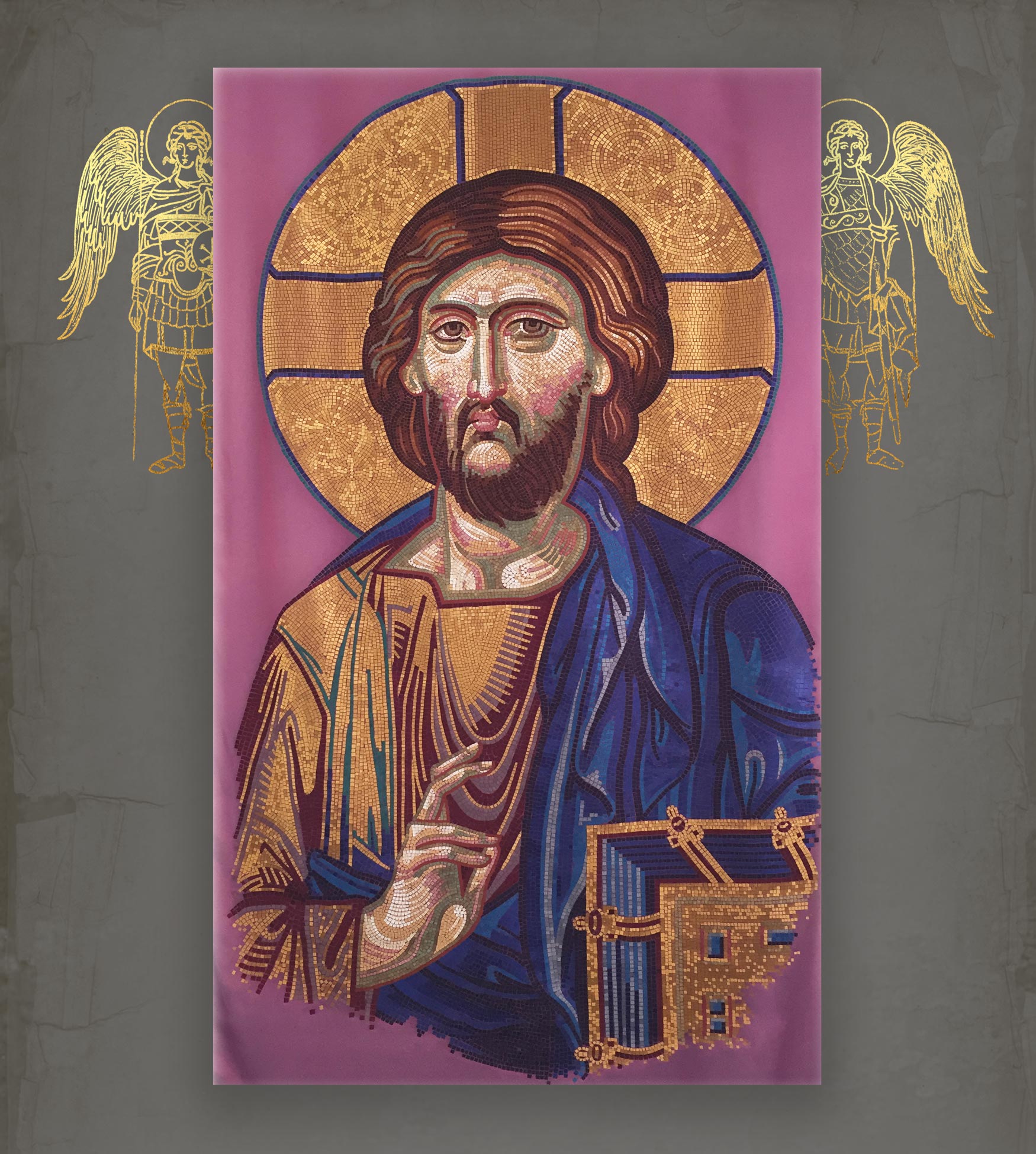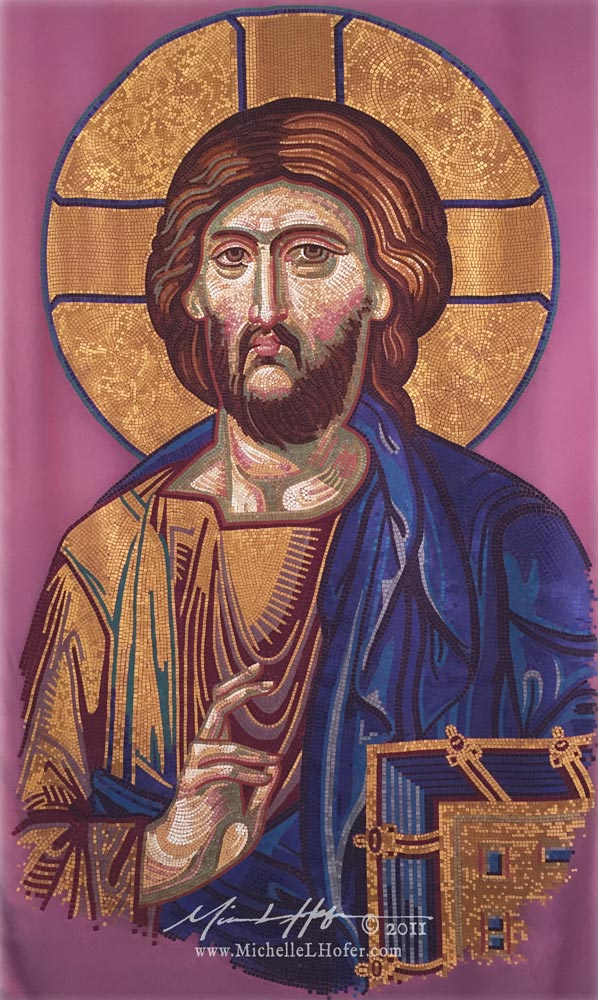
Christ Pantocrator Textile Mosaic
(after mosaic in the Hagia Sophia Cathedral) — 2011
by Michelle L Hofer
Fabric construction, 9 x 4.5 feet
My textile Pantocrator mosaic is based on the mosaic I saw in the Hagia Sophia Cathedral in Istanbul. Mine is just slightly larger than the original and is the most extensive work of art I have ever completed. It contains around 20,000 hand-cut fabric tiles in cotton, satin and taffeta fabrics versus stone tiles. An iron-on backing was applied to a variety of colored fabrics which were then hand cut into 1/4—3/8 inch squares. The squares were then individually positioned on the sheer background fabric and ironed into place.
Pantocrator is the Greek word meaning Almighty, all-powerful, ruler of all, sustainer of the world. Pantocrator is the name given to Christ in the book of Revelation where it appears nine times.
Christ Pantocrator is an example of one of a handful of prescribed compositions or prototypes accepted for portraying Christ in the icon tradition. In the Pantocrator model, Christ is pictured holding the gospels in his left hand and makes a gesture of blessing with his right hand, or what is also known as the orator’s gesture indicating Christ has the authority to speak.
In Byzantine church decoration, the Pantocrator would be the largest and most centrally located, usually occupying the church’s central dome.
We are not trying to create an exact image of what Christ looked like – but rather a visual metaphor for who Christ is:
-
- perspective, light and shadow, and coloration are all stylized to alert the viewer that the image portrayed has heavenly significance
- Christ’s dual identity as fully God and fully man are emphasized throughout the image… the part in his hair and beard, the two raised fingers, a garment of red and blue
- these specific garment colors are for Christ only — Christ wears an under-garment of deep red signifying His humanity with a gold band across the right shoulder indicating His rank as highest among all men. He wears an over-garment of blue signifying His divinity.
- note what we would call a halo, the correct term is nimbus. The nimbus is a visual idiom used to indicate holiness, being Spirit-filled, or the light of God radiating from within. While all other persons are portrayed with a simple, unadorned and empty nimbus, unique to icons of Christ is the cruciform nimbus, or cross-filled halo (a visual aide in helping identify Christ)
Christ gazes directly at the viewer, and his eyes have that strange ability to follow you.
The facial expression of an icon, of which this is a great example is known as “joyful sorrow”. In it we see a seriousness touched by sadness. Yet the mouth is often just on the verge of a smile, and the eyes seem to be filled with hope. It’s this kind of expression that makes an icon very approachable. In our human states, our moods and emotions change, even so, you can always come before Christ and feel as though he is identifying with what you are feeling…
He is inviting you into conversation.
